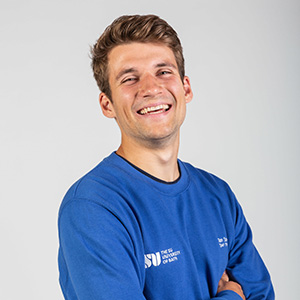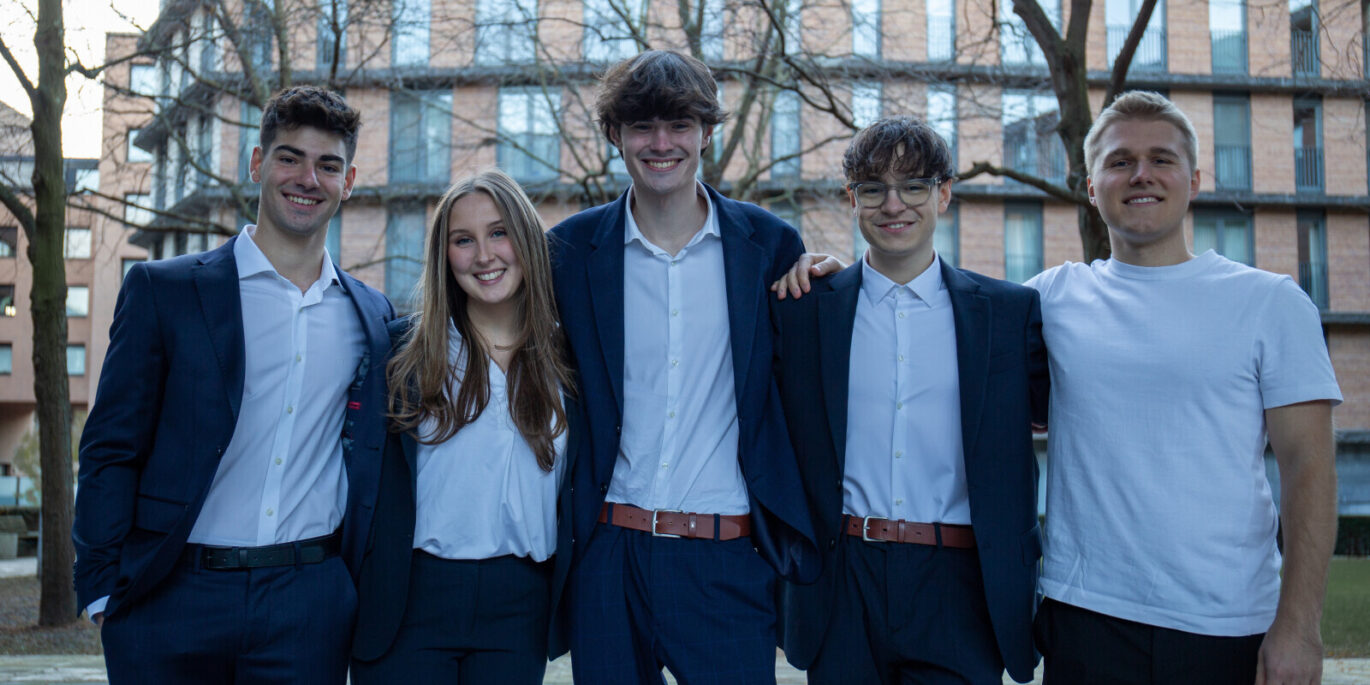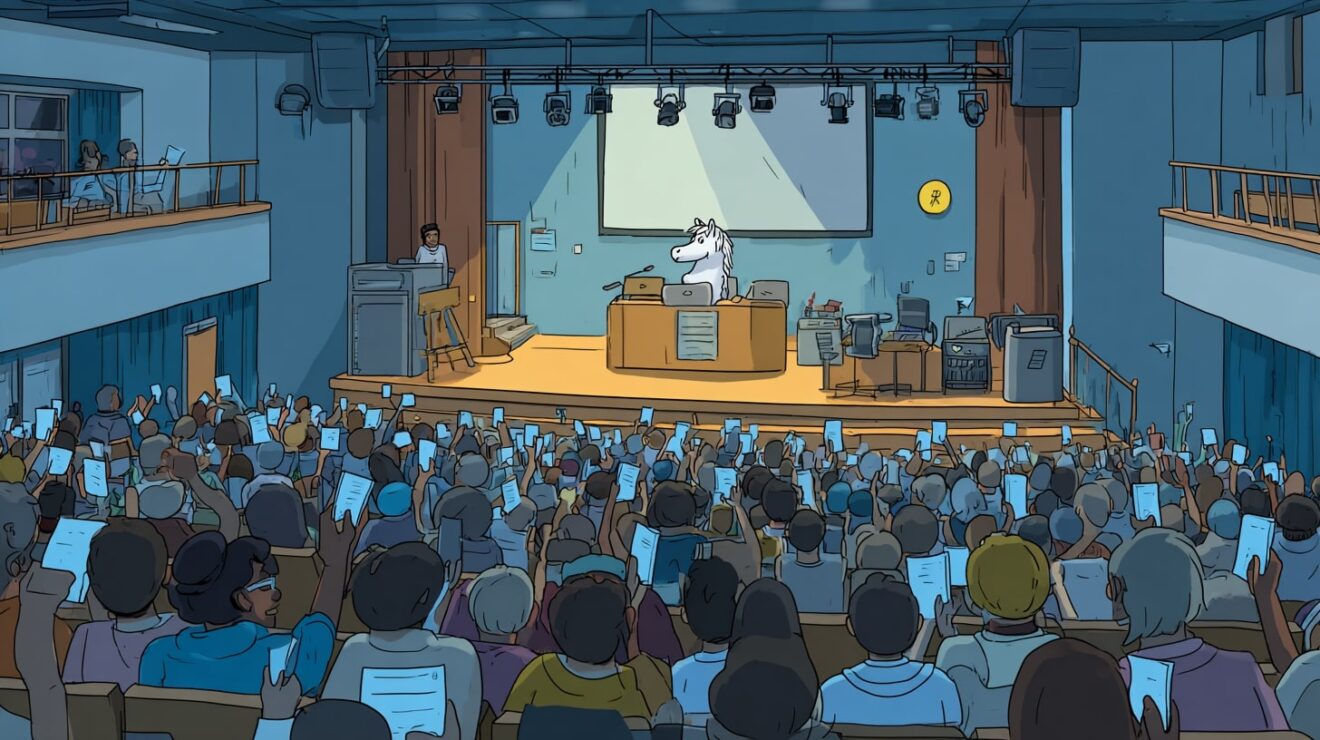There’s been lots of talk of blended educational delivery. But does “blended” have a role to play in thinking about other types of student activity in the year ahead?
When I moved into my flat in 2019, I didn’t really think I’d need to switch the layout of my kitchen between home gym, yoga studio, and volleyball court.
When buying my eastpak rucksack, I never considered having to turn it into a weight, by filling it with tins and water bottles. And when I first downloaded Zoom, I didn’t think I was downloading the platform that would host theory, fitness and S&C sessions, and most of my opportunities to socialise.
Lockdown forced the student sporting community inside, challenged us to be resourceful, and we learned a lot from it. Notably, it has shown the digital world to be capable of providing a number of components of a good sporting experience.
A return to sport
As government guidelines cause the lockdown to ease, some sports are already being played as they were before the pandemic hit – while others have to wait longer before they can return to normal.
Right now people are allowed to exercise and train together in groups of 6 or less, distanced by 2m. That will soon move to 1m. Although the ability to emulate sports differ, some level of in-person training can currently occur in almost every sport – for example a pretty normal tennis training session/match can happen, but a rugby training session might be unrecognisable relative to its 2019 counterpart.
You don’t have to look far through national governing body websites to see that guidelines around sporting activity will probably still be in effect as we begin the 20-21 academic year. We can guess that we will move from this uncertain and at times confusing period of easing into a settled “new normal” that will last until a vaccine appears. And it’s therefore reasonable to assume levels of restrictions on contact, distance in indoor facilities and size of gatherings will persist for most if not all of next academic year.
All of that, coupled with the things that we all take for granted like public transport means that the autumn will hold not only sport-specific implications, but sport-general implications too.
The higher education sport challenge
The demand on HE sport is pretty unique. We need to be facilitating a great, safe experience and community to thousands of students over a huge range of sports, utilising multiple different facilities. We need to have staff collaborating with university management, sports committees, sports members and facilities staff. We need innovation and investment of staff time and finances. We should not need to be justifying sport’s place on campus, and fighting for Wednesday afternoons, or facilities.
Some of the potential operational challenges for in-person are facilities finding alternative uses, transport to and from facilities being of reduced capacity, and capped session attendance. Looking at the above, there’s little doubt that the average facility movement will be lower in autumn.
A rough cross-section
But arguably looking at sport in that way looks through the wrong end of the telescope, and assumes we’re trying to do what we did with less space time and capacity in which to do it. What if we start by thinking about students?
Thinking about those that get involved in sport on an annual basis, we can broadly assume 3 populations:
- The Sport-fixed membership: Stubborn individuals – like myself – blindly sticking to their sport. This group contribute a fairly certain total sport membership for specific clubs. The concern with this group is ensuring excellent opportunities for members despite differing guidelines around how they can train or play.
- The Sport-variable membership: Will definitely play sport at uni, but not set on a particular one. This group contributes a fairly certain central sporting membership, but their distribution over different sports clubs might vary year-to-year. Next year, it’s reasonable to assume a high concentration within sports clubs that can provide a good in-person offer.
- The True-variable membership: Students that may, or may not get involved in university sport. This group contributes a variable central-sporting membership. The concern with true-variable members is making university sport appealing, reducing barriers to sporting engagement, and getting people active, in spite of the circumstances.
A blended offer
Our priority should always be ensuring that as many students as possible can access an excellent sporting offer, and the beginning of this academic year may challenge what we mean by that. For me that means “blended” needs to be something we think about in terms of sport rather than just academic courses.
With a blended approach we provide a level of in-person training to whet the sporting appetite, and more hours online to ensure we can supplement this offer in a way that promotes community, development and enjoyment.
The in-person part of the blend
First, we need to ensure that players can regularly connect face-to-face. In-person will not only enable closer emulation of sporting environments than a virtual offer, but will provide students with authentic opportunities to meet people outside of their houses, enabling the building of social capital in a time where it will be significantly harder to do so.
The in-person offer needs to piece together UK Active, NGB, and facility guidance to understand the sport specific barriers, and therefore levels of activity that can be achieved in each sport. Risk-assessments need redoing, and training needs to be delivered so that both, members and coaches know the roles they play in getting active, safely and responsibly.
Some sports will be able to provide competitive opportunities that are similar to normal-play, or the real-deal. These will, at least temporarily be of greater appeal to the variable sporting population. Our job is to ensure the opportunities to get involved at every level, supporting clubs to develop their offer, increase their capacity, and then their reach. Doing this well could ensure that sport-variable and true-variable members can be guided to sports that have the potential to provide the best sporting experience from the outset.
We must also look to ensure in-person opportunities over all of our sports, regardless of the ability to emulate sports well. We must provide as much support and encouragement to high-contact sports to regularly ensure those opportunities are provided to the sport-fixed memberships.
The virtual part of the blend
As well as in-person, we need a personal-virtual offer. Regular, varied digital activities, allowing connection and further development in sport. This will also, importantly alleviate some of the sport-general burdens such as pressure on facilities and public transport.
For some students, virtual will reduce the need to get over to a facility for sessions that supplement their sport. For others, it may provide an opportunity than they weren’t previously afforded to develop fitness, theory, or movement patterns for their sport. Many won’t have the option of attending in-person, and virtual will vitally ensure engagement with their sporting communities.
We therefore need to commit to ensuring an exceptional, virtual offer, getting buy-in from our club committees and coaches to enable great delivery. Lockdown has shown us that we can still do a lot in terms of content, facilitating an accessible, professional, engaging offer that we might’ve previously been unable to (ie. Due to facility times, location…).
However, in many cases, it’s been a bit of a tick-box exercise, with the main focus on the content, and not the audience. Why should anyone care if you’ve put up a link to your Average-Joe fitness video for your whole membership? What connection does it have to their sporting community?
For virtual to be effective, it needs to be personal. A regular fitness session over zoom, run by a friendly face encourages interaction between all those involved. It also means those that stop joining in don’t fall through the net, and can be given gentle nudges to come back, similarly to in-person. Whether through encouraging competition, fitness, or learning skills, the emphasis of virtual needs to be placed on sporting communities, connecting.
It also can’t be viewed as a “nice addition” to the in-person offer. With huge reductions in learning contact hours, and days on campus, we need to maintain structure for students. Next year the whole blended offer needs to be regular, timetabled, and stuck to by session leads. Similar to a “normal” weekly sporting calendar, this may involve opportunities to engage with teams or groupings of similar experience, as well as chances to integrate with other areas of the club.
And we will need to take deliberate steps – in conjunction with our universities WP teams – to make sure that students on the wrong side of the “digital divide” are able to access what we’re doing virtually.
An excellent offer
Providing an excellent sporting offer at the beginning of the academic year is a multifaceted challenge, that will limit in-person sporting opportunities as a whole. But there is huge potential for the blended offer here. A symbiotic relationship between in-person and digital is vital, and when used correctly can be a powerful instrument for further connection and development.
This all means a huge collaborative effort is needed between SU’s universities and students to have something in place for next year, and that needs starting as soon as possible! But even outside of student sport thinking “blended” – for volunteering, student societies and student representation too – is almost certainly going to be the right thing to do.


















